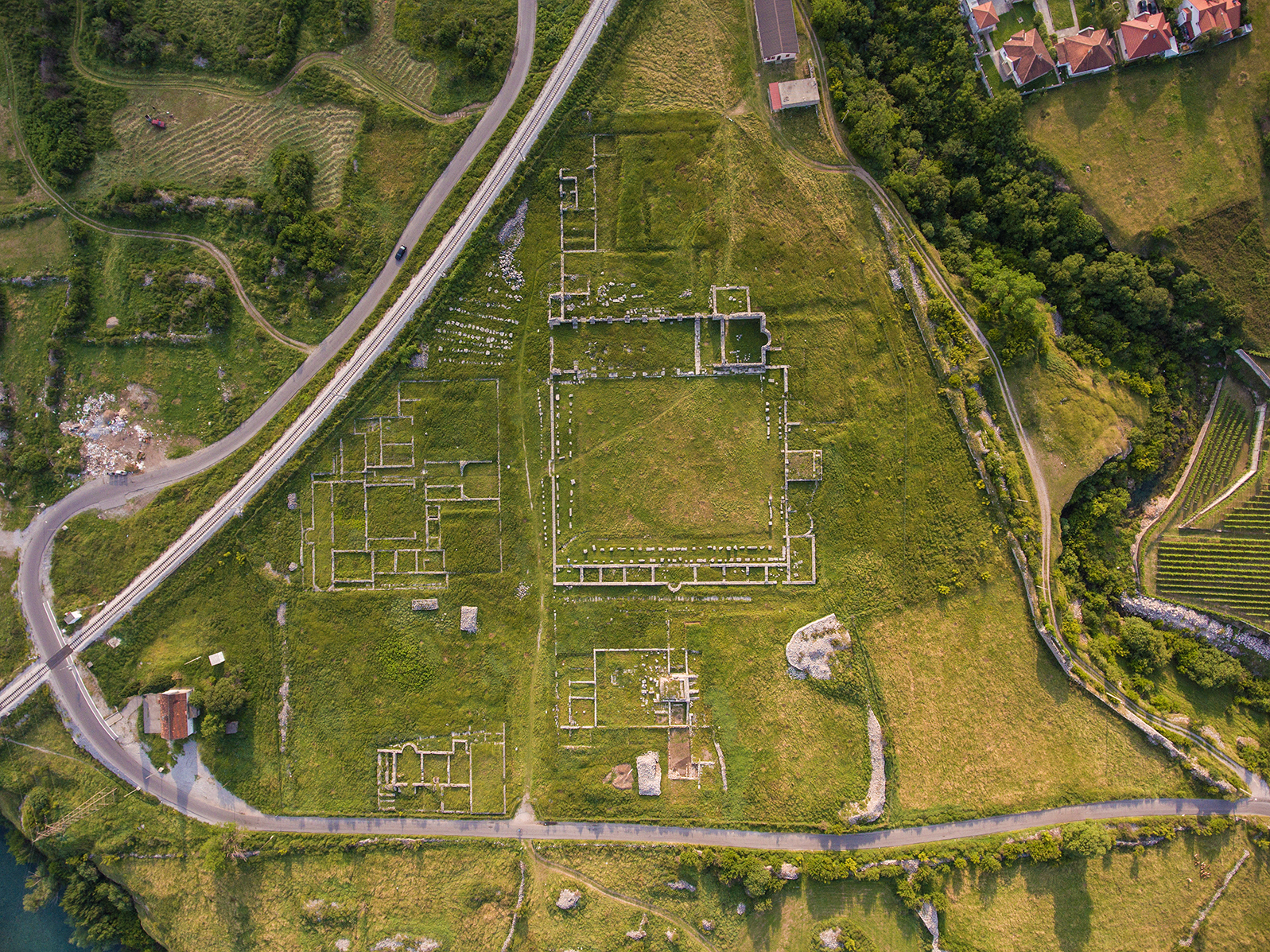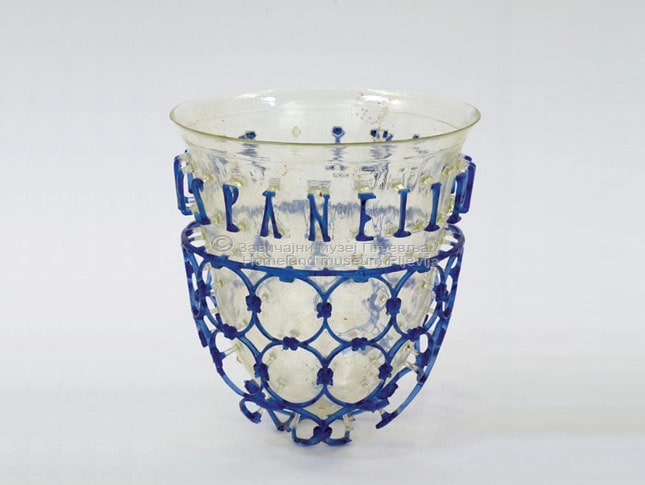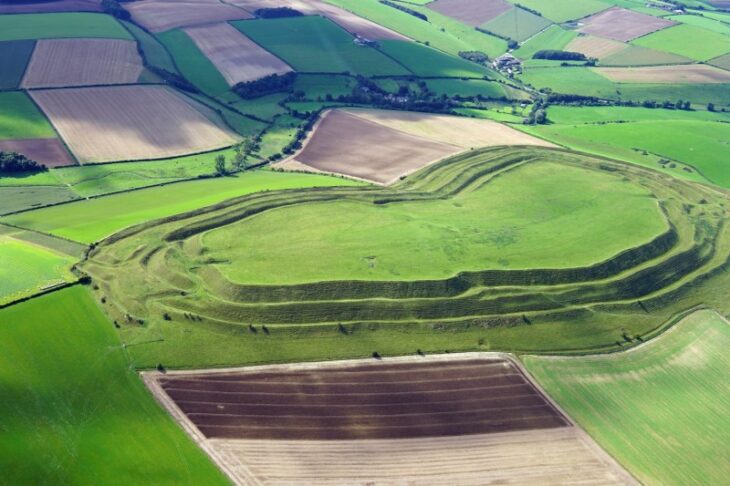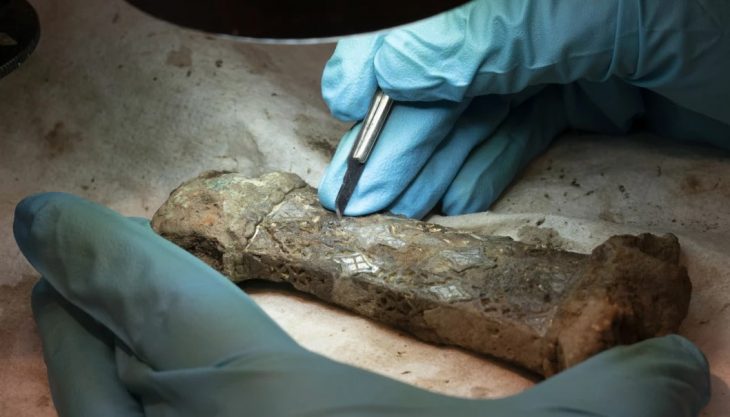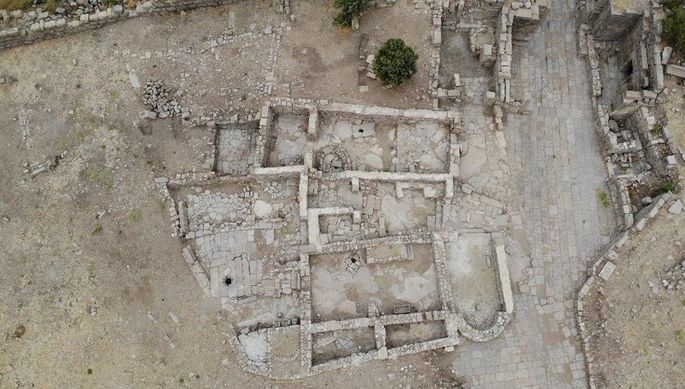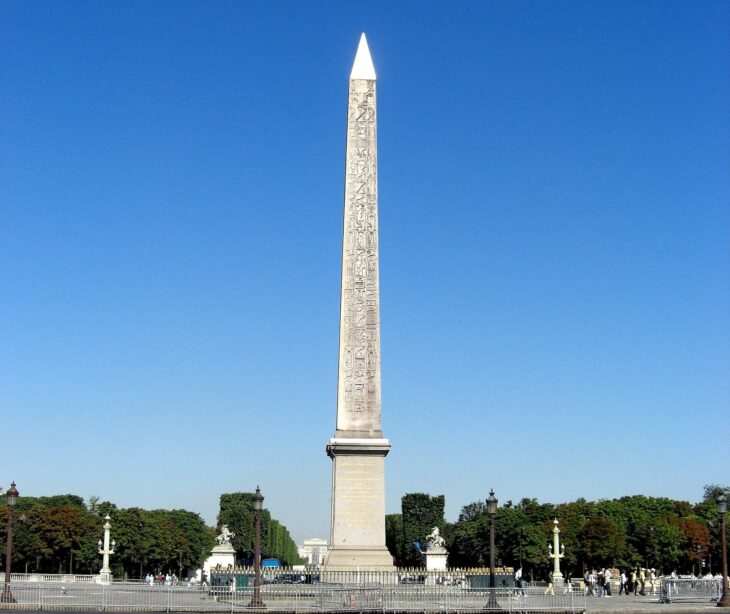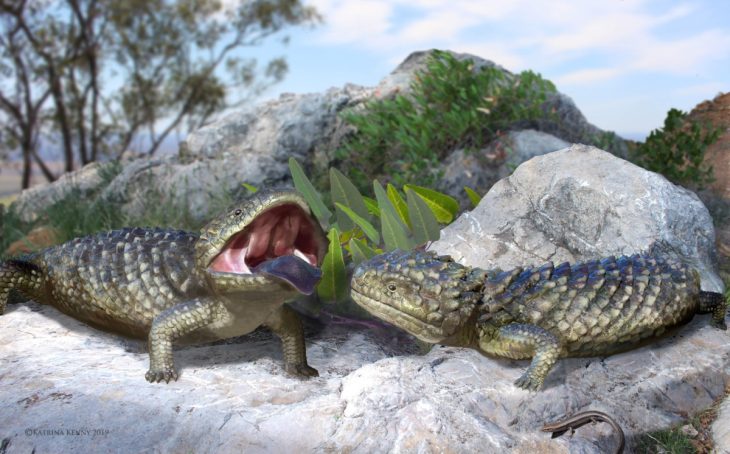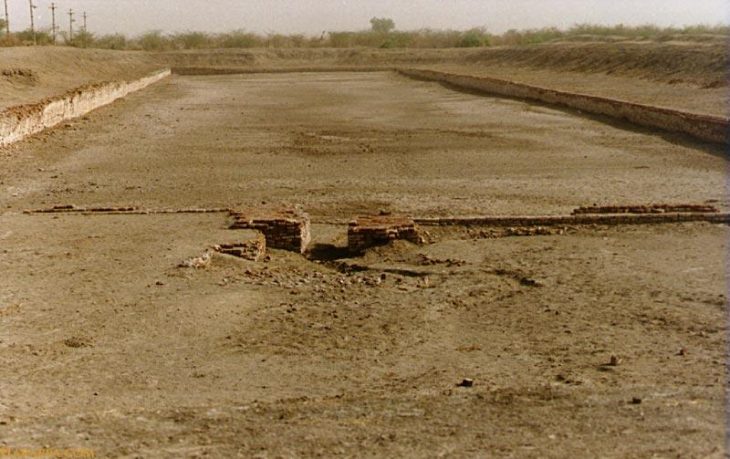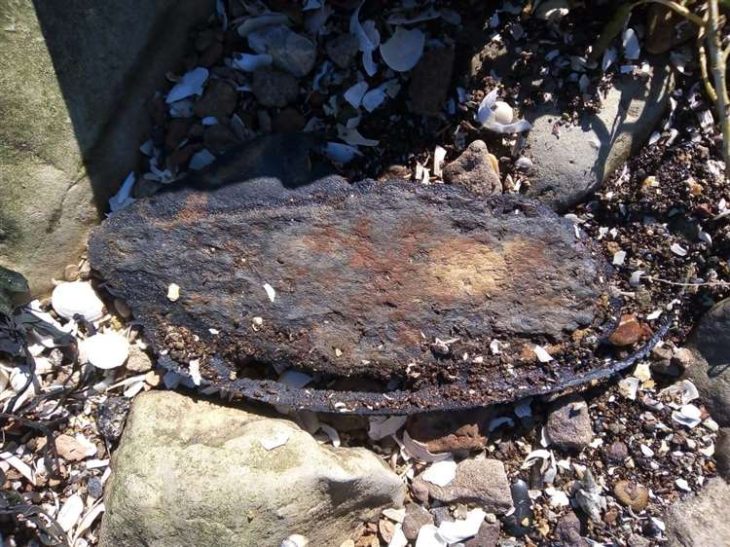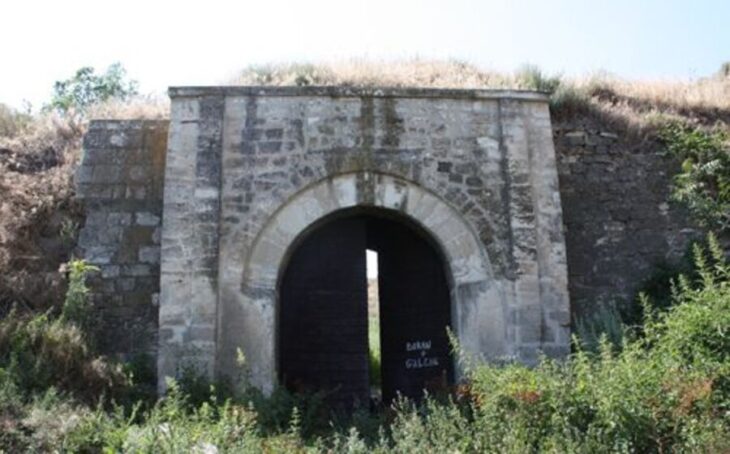An extraordinary archaeological discovery has been made in the ancient Roman city of Doclea, located near Podgorica, Montenegro. During recent excavations of the city’s western necropolis at Koshturnica, archaeologists uncovered the richly furnished tomb of a high-status Roman woman, dating back approximately 1600 years. Among the many grave goods was a rare Roman glass vessel known as a diatreta, adorned with an unprecedented gladiator scene, making it one of the most significant finds of its kind in the region.
The excavations are being conducted under the leadership of archaeologist Miloš Živanović.
Doclea, also known as Docleia or Dioclea (known as Duklji in Montenegrin), was founded in the 1st century AD and flourished as an important urban, cultural, and economic center within the Roman province of Dalmatia. The city thrived until the early 7th century, when it was eventually abandoned. Its strategic location near trade routes, advanced urban planning, and impressive public architecture—such as forums, temples, and bath complexes—make it one of the most significant archaeological sites in Montenegro.
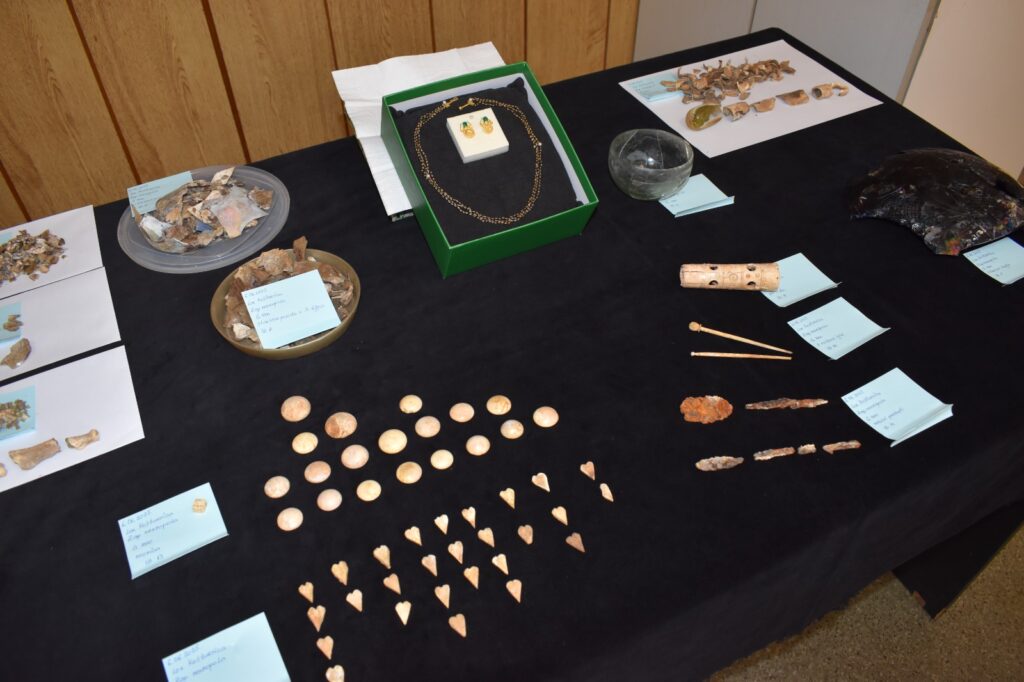
For the past three years, systematic excavations have been taking place at Doclea’s western necropolis, in an area known as Koshturnica. More than 180 graves have been explored, revealing an abundance of ceramics, glassware, jewelry, tools, and coins. These findings reflect the social status and cultural richness of ancient Doclea’s residents.
This year’s highlight was the discovery of the tomb of a Roman woman, dated to the 4th century AD, buried with luxurious grave goods. These included gold earrings, a necklace, bone tools, game pieces, and notably, eight glass vessels. Among them was the centerpiece: a diatreta, a type of elaborately decorated Roman glass.
📣 Our WhatsApp channel is now LIVE! Stay up-to-date with the latest news and updates, just click here to follow us on WhatsApp and never miss a thing!!
According to Živanović, “The grave goods include two gold earrings with green glass beads, and a necklace made of gold and jet beads.” He added, “Eight glass vessels were discovered in total, two of which are particularly notable. One is a finely crafted dark glass bowl or plate, while the other is a rare diatreta.”
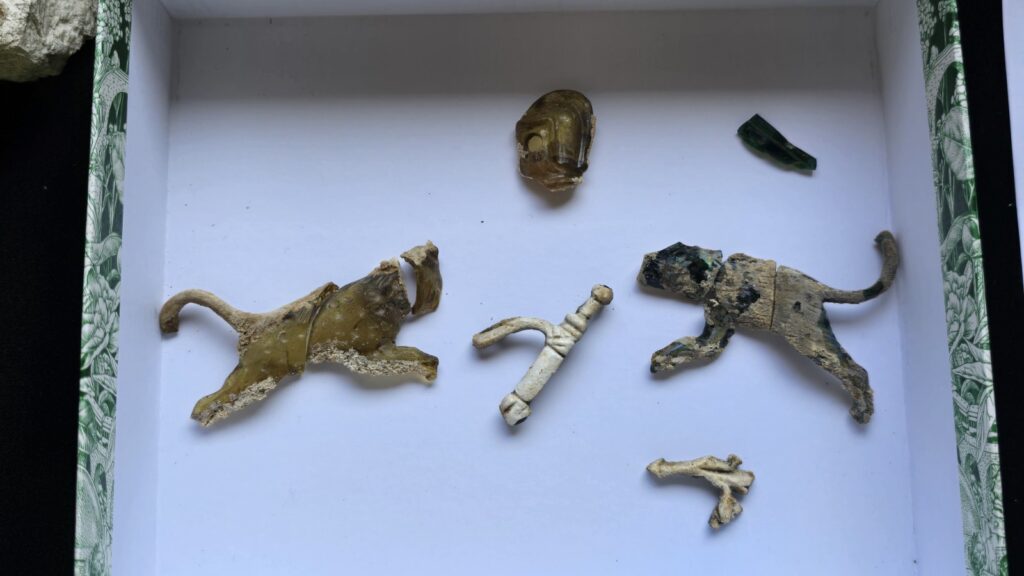
Diatretae are extremely rare luxury artifacts known for their intricate openwork “net” design, often featuring inscriptions or figural representations. What makes this particular find exceptional is the depiction of a gladiatorial scene, specifically a venator (wild beast hunter) fighting leopards. No other examples of this type have been discovered to date, making this a unique artifact of international significance.
“We can proudly say that this is the second diatreta found in Montenegro, the first being in Pljevlja. Unfortunately, this one is not fully preserved, and it will require extensive conservation. We hope to recover its complete form,” he said in a statement to Arkeonews.
“Our diatreta is extremely rare—rarer even than the one in Pljevlja—because it is figural. The net of the vessel features a battle scene with wild feline animals, likely cheetahs, centered around a gladiator – a venator–fighting them. The vessel is made in two colors: yellow and green.”
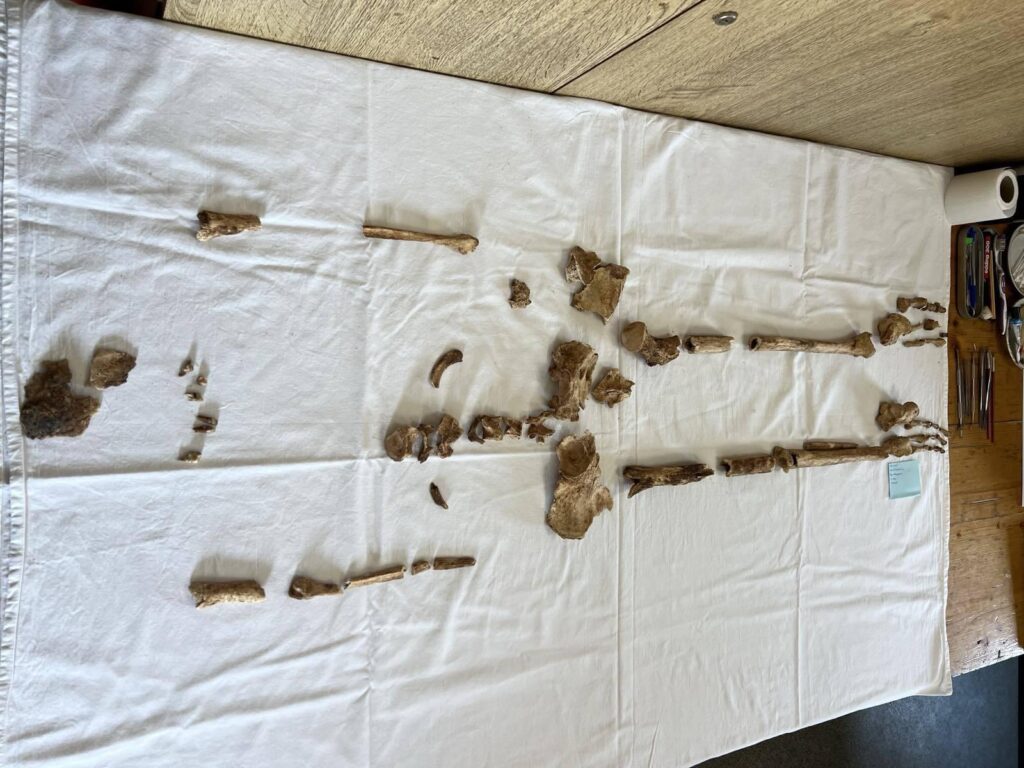
Although the newly found diatreta is not fully preserved, the surviving fragments convey both technical mastery and artistic symbolism.
He also stated, “We found a container (pyxis) that held needles and spatulas, a board game set, and various types of vessels such as balsamaria, cups, and jugs—all part of the grave inventory.”
Commenting on the remains, Živanović noted, “Although the bones are poorly preserved, current analysis suggests that the woman was exceptionally tall, which is unusual for Doclea in the 4th century. All the findings indicate she was a prominent individual of her time.”
This remarkable discovery not only highlights the opulence of Doclea’s Roman elite but also represents a significant contribution to the study of ancient Roman glassmaking and funerary practices.
Cover Image Credit: Aerial view of the ancient city of Doclea. Public Domain

